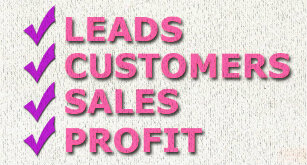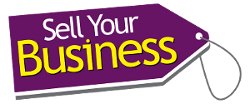
Increasing your profits before you sell to maximise business value.
Preparing a business to be sold is no small feat – especially when you want to do all you can to maximise business value. During the lead up to a sale, all efforts need to be focused on increasing profits and reducing waste. There are three main ways to grow a business. By fully understanding these profit growing techniques, and implementing them correctly, you’ll be able to instigate an exponential growth curve. Being able to demonstrate an upward curve should cause buyers to be clambering at your gates.
The three techniques to maximise business value through profit increases include increasing:
- The amount of people buying
- The average sales order value
- The frequency of purchase – getting current buyers to buy more often
If you increase these three areas by only 10% you’ll effectively achieve a 33% increase in profits.
For example, let’s pretend you have 1,000 clients with an average sales value of £100 and your customers buy 3 times per year.
1,000 x 100 x 3 = 300,000
By increasing the clients, the average sales value and the frequency of purchase by 10% each you’ll get:
1,100 x 110 x 3.3 = 399,300 (a 33% increase)
That means that you simply need to attract 10% more clients, create a way to increase the sales value by 10% and achieve a 10% increase in the frequency.
Keeping in mind that you’re working on selling the business, now is not time to roll out new products, start massive campaigns or new initiatives. It’s time to working on your business not in it. Small changes can lead to a massive increase in profits. The key is to work smart and keep it simple. Here are some quick-to-implement suggestions on how you can increase each area by 10% or more:
Increase the amount of people buying from you (to maximise business value)
If you want to increase leads quickly you can have them delivered to your inbox within hours. Create a Google pay-per-click (PPC) campaign. Creating a campaign isn’t rocket science however most businesses get it wrong and lose money. First, let me explain what it is. PPC is a way for you to buy click-throughs to your website for a very low cost (20p – 50p each) from the Internet. You create a small advert and assign keywords to it. When a user types in those keywords the advert appears on the search results page.
This is where being smart comes in. Not only do you want the user to click on the advert, but you want them to come to your website and leave their details so that you can then follow-up (and sell to them). They’re not a lead until you have the ability to contact them! The best way to get a user to leave their details is to offer something of high-perceived value that costs little or nothing to you.
Examples include, offering a free report, free sample, free video or free consultation. The best freebies offer to solve the user’s largest problem (in relation to your product or service). So, if you’re a letting agent looking for new landlords, you’d advertise a free booklet on the ‘Top 10 Tips To Maximise Rental Returns.’ If you sell a cost cutting service to businesses, you’d advertise something like, ‘Free Guide On Reducing Business Expenditure By 30%’ and so forth.
The PPC advert promotes the freebie and once the user is on the website, they must enter their contact details to get the freebie. All in all, the whole set up requires a PPC account, a landing page on a website, a form to collect the users details and some sort of freebie. Within a day you can have the whole thing set up and streaming in new leads.
This is precisely the system that I’ve used in the past and my return on investment (ROI) was around the 400% mark. Anyone that tells you that PPC is a waste of money just doesn’t know how to use it correctly.
Increase the average sales value (to ultimately maximise business value)
This is real easy. Studies show that around 40% of people will say yes to an upsell at the point of purchase. The best company to refer to regarding this principle is McDonalds. They were happily selling their burgers and then decided to ask every buyer at point of purchase, ‘Would you like fries with your order?’ And guess what happened? Over 40% said ‘yes’ and McDonalds immediately increased their profits by the millions.
What can you offer to your buyers at the point of purchase? Last week I went online to buy some new bedding. I selected a duvet, cover, bottom sheet, and some pillows. Being satisfied with my selection, I went to check out and right before purchase I was offered a beautiful bundle of fresh white towels for only £14.99. Did I buy them? Yep. And I’m sure lots of other people buy them too. When people are spending money, keep giving them reasons to spend more. You’re not adding any extra work – you’re just including another step within the sales process.
Implementing this one technique can seriously impact your bottom line and improve it.
So, what could you upsell at the point of purchase? And if 40% of your buyers said yes, what would that do to your profits?
Increase the frequency of purchase (to maximise business value)
The best way to increase a frequency of purchase is to make sure you’re in front of the consumer as much as possible. In my businesses I’ve relied heavily on automated emails and newsletters. I would send out educational content adding value to the customer in addition to reminding them to buy something from me. This type of system however is very time consuming to set up.
Knowing that a sale is on the horizon and you want to maximise business value, the quickest way to increase your frequency would be to set up a short automated email sequence reminding the customer of other products or services they might like. You can also schedule into your sales process a telesales call. The best way to do this is to call a customer a few days after purchase as a routine customer service call. While asking them about their purchase, have your caller(s) prepared to sell another item.
And if you don’t have a product or service to offer find someone that does. There’s no harm in selling someone else’s product or service so long as you get a nice cut from the deal. Brainstorm companies out there that want to sell to your database. Then go out with the intention of setting up a joint venture. This is a very quick technique that can increase profits easily. Doing joint ventures will allow you to leverage the database with no added stock or work on your end.
As I say often – work on the business rather than in it (Read the article ‘Working On Your Business Not In It’) . By simply pulling yourself out from the day to day running of things, you’ll be able to focus on top-level strategic techniques like these three that will put you in prime position for a quick business sale.
Kim Brown, Co-Founder of Business Wand, helps business owners navigate their way through the start to finish process of selling a business. Her specialty is to help owners cut costs and increase profits prior to sale. To understand how you can sell your business quickly for the highest sales price, purchase the book, “How To Sell A Business: The #1 guide to maximising your company value and achieving a quick business sale”
